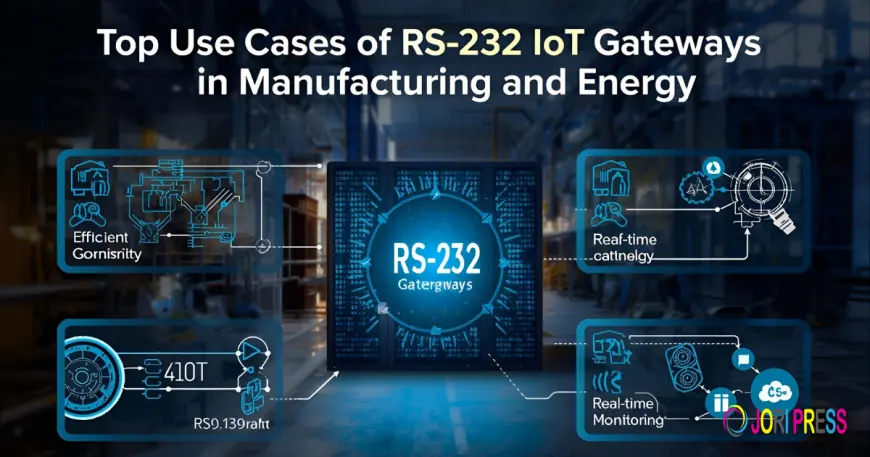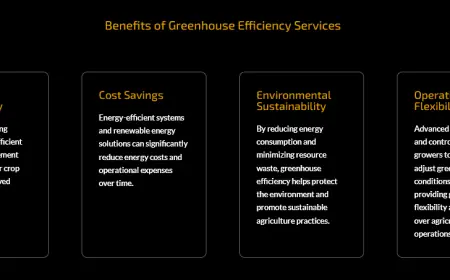Top Use Cases of RS-232 IoT Gateways in Manufacturing and Energy
Discover top RS-232 IoT Gateways use cases in manufacturing and energy, improving connectivity, automation, and efficiency in industrial operations.

Industries like manufacturing and energy rely heavily on machines and equipment that were designed decades ago. These legacy systems are robust, but they typically lack the ability to communicate with modern Internet of Things (IoT) platforms. Most of these devices use the RS-232 serial communication protocol, a standard created in the 1960s that remains in widespread use.
The challenge is: How can businesses extract valuable data from these devices without replacing them entirely?
The solution lies in RS-232 IoT Gateways. These gateways translate RS-232 signals into IoT-friendly communication formats (like MQTT, CoAP, or Modbus TCP/IP), enabling seamless integration with cloud services, edge platforms, and enterprise applications.
This blog explores the most impactful use cases of RS-232 IoT Gateways in manufacturing and energy, industries where efficiency, monitoring, and reliability are paramount.
Why RS-232 IoT Gateways Matter
-
Legacy Compatibility: Many factories and power plants still operate with equipment that is 10–30 years old. These machines use RS-232 ports for communication. By using a gateway, organizations can connect them to IoT ecosystems without needing costly replacements.
-
Cost Efficiency: Replacing an entire production line or power grid component can cost millions. Gateways allow businesses to modernize at a fraction of the cost by extending the useful life of their existing assets.
-
Data Visibility: RS-232 devices store valuable operational data locally. A gateway unlocks this data and pushes it into IoT dashboards or analytics platforms, enabling better decision-making.
-
Scalability: Whether a company wants to start with a few devices or connect thousands, IoT gateways offer scalable solutions. They integrate easily with cloud platforms like AWS IoT Core, Microsoft Azure IoT Hub, or private industrial IoT networks.
Use Cases in Manufacturing
1. Connecting Legacy PLCs to IoT Platforms
Programmable Logic Controllers (PLCs) are the backbone of industrial automation. Many older PLCs use RS-232 interfaces, making it difficult to connect them to modern control systems. RS-232 IoT Gateways solve this by:
-
Converting RS-232 signals into IP-based protocols like Modbus TCP/IP, OPC UA, or MQTT.
-
Allowing data such as cycle times, production counts, and error logs to be transmitted in real time.
-
Enabling manufacturers to optimize production efficiency and reduce downtime by gaining insights from machines that were previously “offline.”
2. Machine Condition Monitoring
Unplanned downtime is one of the biggest costs in manufacturing. By using RS-232 IoT Gateways, data from machine sensors such as:
-
Temperature sensors (to monitor overheating),
-
Vibration sensors (to detect wear and tear),
-
Motor speed controllers (to ensure stable operations),
…can be captured and analyzed.
-
Predictive analytics tools can detect anomalies early and trigger maintenance alerts.
-
This helps prevent breakdowns, saves repair costs, and extends equipment life.
3. Quality Control and Process Optimization
Quality control systems such as barcode readers, weighing machines, or inspection cameras often use RS-232 interfaces. When integrated through an IoT gateway:
-
Real-time product inspection data can be pushed directly to manufacturing execution systems (MES).
-
Any deviation in product weight, dimensions, or labeling is detected instantly.
-
This minimizes defective output, reduces waste, and ensures compliance with ISO and other quality standards.
4. Inventory and Asset Tracking
Warehouse management relies on tools like barcode scanners, RFID readers, and printers — many of which use RS-232. Gateways provide:
-
Seamless data synchronization with ERP or supply chain systems.
-
Real-time updates to inventory records, preventing stock mismatches.
-
Improved warehouse automation by connecting old devices with smart logistics software.
For example, a barcode scanned in a warehouse can instantly update stock levels in SAP or Oracle ERP systems via an RS-232 IoT Gateway.
Use Cases in the Energy Sector
1. Smart Grid Integration
Smart grids rely on real-time data to manage demand and supply. Older electricity meters and transformers often output data via RS-232. With IoT gateways:
-
Metering data can be converted into IoT protocols and transmitted to grid management platforms.
-
Utilities can forecast demand, detect power theft, and balance loads effectively.
-
Consumers and enterprises benefit from accurate billing and demand response programs.
2. Remote Monitoring of Substations
Substations are spread across vast regions, making manual monitoring costly and time-consuming. With RS-232 IoT Gateways connected to legacy devices:
-
Operators can monitor voltage, current, frequency, and power factor remotely.
-
Alerts can be generated automatically in case of overloads or failures.
-
Maintenance teams can prioritize critical issues instead of doing routine manual checks, cutting operational costs.
3. Renewable Energy Equipment Monitoring
Solar, wind, and battery storage systems often rely on inverters and controllers with RS-232 interfaces. Gateways help connect them to cloud platforms, enabling:
-
Performance tracking of each solar panel or wind turbine in real time.
-
Failure prediction for inverters and battery systems using AI-driven analytics.
-
Optimization of energy production, ensuring renewable assets operate at peak efficiency.
This makes renewable power plants more reliable and profitable.
4. Oil & Gas Asset Management
In oil fields, pipelines, and refineries, RS-232-based devices such as flow meters, pressure transducers, and gas detectors are common. IoT gateways:
-
Collect continuous streams of operational data.
-
Monitor hazardous conditions such as gas leaks or pressure spikes in real time.
-
Ensure compliance with safety and environmental regulations by logging data automatically.
This reduces risks, enhances worker safety, and prevents costly accidents.
Benefits Across Both Industries
-
Seamless IoT Integration: Brings legacy devices into modern digital ecosystems without expensive replacements.
-
Reduced Operational Costs: Extends the life of existing equipment, avoiding capital-intensive upgrades.
-
Enhanced Safety: Real-time monitoring minimizes equipment failures and workplace hazards.
-
Data-Driven Decision Making: Unlocks actionable insights for predictive maintenance, efficiency improvements, and energy optimization.
-
Scalable Infrastructure: Companies can start small and scale up their IoT adoption as needed.
Conclusion
The RS-232 IoT Gateway is not just a bridge — it’s a powerful enabler of digital transformation. In manufacturing, it improves productivity, quality, and predictive maintenance. In energy, it powers smarter grids, renewable energy optimization, and safer oil and gas operations.
By leveraging RS-232 IoT Gateways, companies can protect their investments in legacy equipment while gaining the benefits of modern IoT. This balance of cost efficiency, scalability, and real-time visibility makes them essential in Industry 4.0 and smart energy transitions.
FAQs
1. What is an RS-232 IoT Gateway?
An RS-232 IoT Gateway is a device that connects legacy RS-232-based equipment (such as PLCs, sensors, and meters) to modern IoT networks. It translates serial communication into IoT-friendly protocols like MQTT, Modbus TCP/IP, or OPC UA, enabling real-time data transfer to cloud or edge platforms.
2. Why are RS-232 IoT Gateways important in manufacturing and energy?
They allow industries to modernize without replacing expensive legacy equipment. Manufacturing plants use them to monitor production lines and quality, while energy companies rely on them for smart grid integration, renewable energy monitoring, and substation management.
3. Can RS-232 IoT Gateways work with cloud platforms?
Yes. Most gateways are designed to integrate seamlessly with leading cloud IoT services such as AWS IoT Core, Microsoft Azure IoT Hub, Google Cloud IoT, and private industrial IoT solutions. This enables centralized monitoring, analytics, and remote control.
4. What are the main benefits of using RS-232 IoT Gateways?
-
Extend the lifespan of legacy machines.
-
Enable predictive maintenance and condition monitoring.
-
Reduce downtime and operational costs.
-
Improve data-driven decision-making.
-
Ensure scalability for future IoT expansion.
5. Are RS-232 IoT Gateways secure?
Yes, modern RS-232 IoT Gateways support encryption, secure communication protocols, and authentication mechanisms. Security features such as TLS/SSL, VPN support, and firewall integration ensure safe data transmission from field devices to enterprise systems.
What's Your Reaction?
 Like
0
Like
0
 Dislike
0
Dislike
0
 Love
0
Love
0
 Funny
0
Funny
0
 Angry
0
Angry
0
 Sad
0
Sad
0
 Wow
0
Wow
0
















































